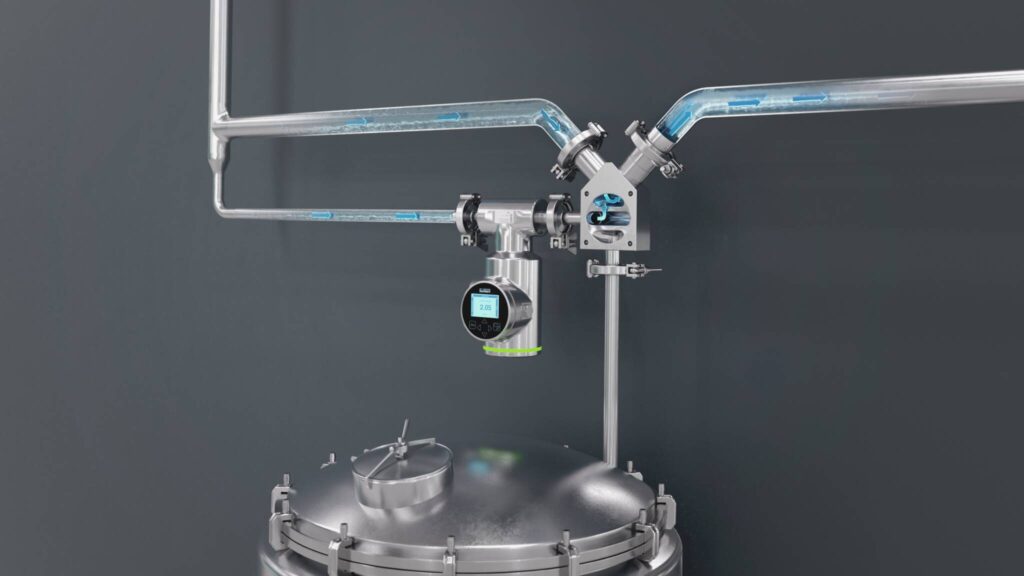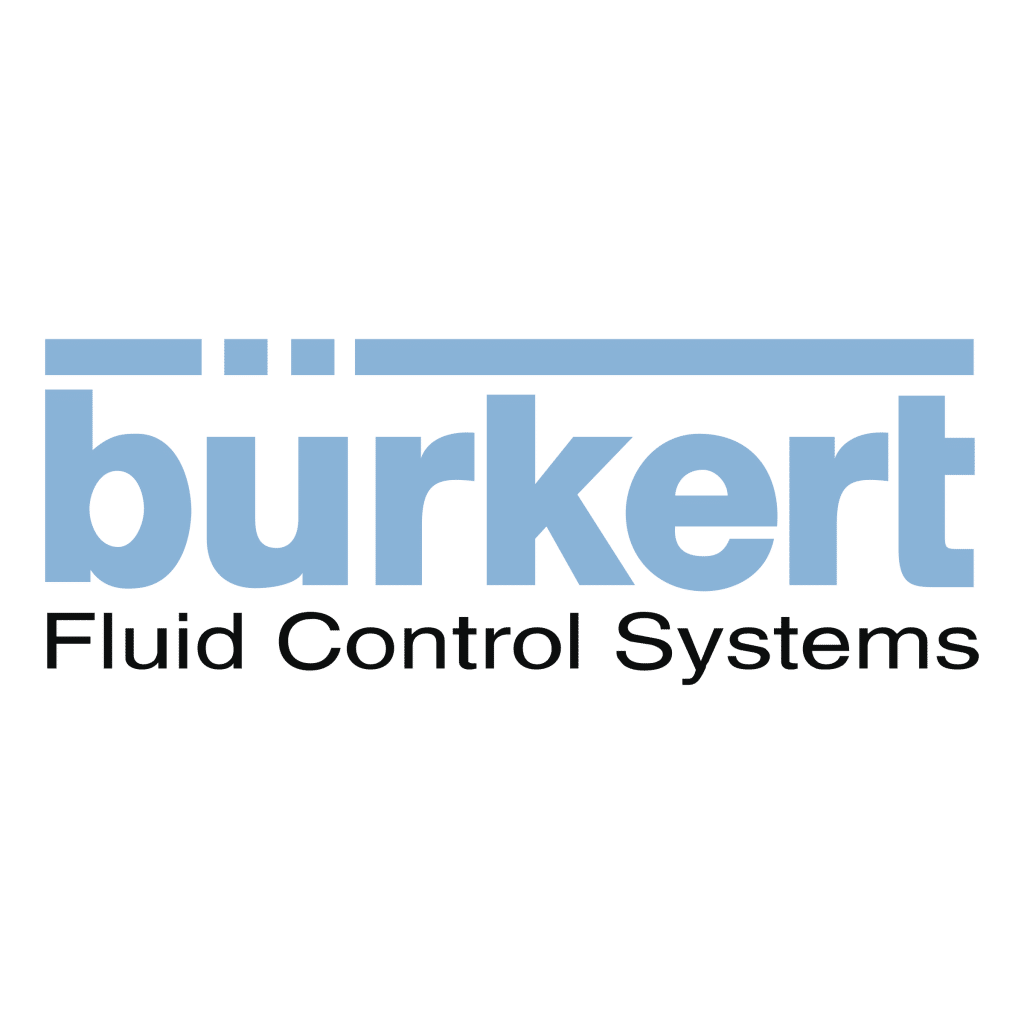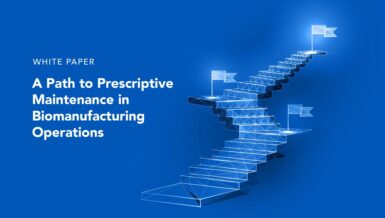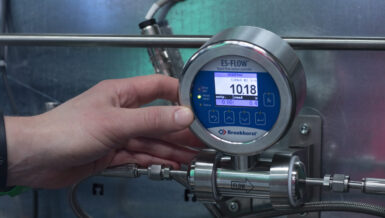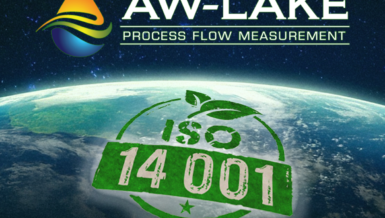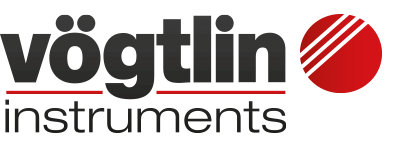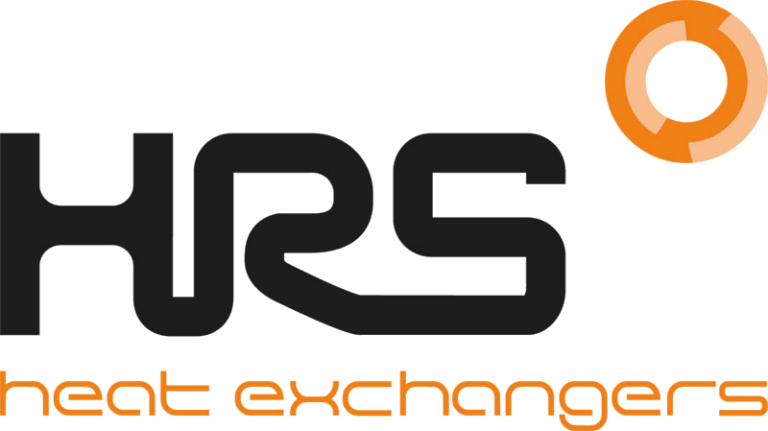Bürkert’s Business Development Manager for Pharma & Biotech, Damien Moran, explains.
As ultra purified water used in the preparation of parenteral drugs, it’s essential for WFI to be free from impurities. To achieve this, a WFI loop is a closed distribution system that continuously circulates the media, ensuring it remains within required specifications. However, a WFI loop alone cannot guarantee the quality of the output media. A key challenge is the prevention of biofilms, which are formed by the accumulation of trace bacteria.
Undetectable, trace amounts of bacteria can enter a WFI loop through microscopic leaks or cracks in the system, or contamination from maintenance. Given the conditions necessary for their growth, including microscopic traces of nutrients, temperature fluctuations, or insufficient cleaning practices, this is how trace bacteria can develop into a biofilm. Precise flow control then becomes crucial to ensure that trace bacteria isn’t given the potential to grow.
Biofilm development
Critical to this process is the prevention of dead zones, which are sections of piping with minimal or no flow. Stagnant water collated in dead zones allows bacteria to settle and multiply, while low flow areas, with less mechanical force to dislodge the bacteria, can also lead to bacteria accumulation. Microscopic physical imperfections within the WFI loop, including the piping and any instrumentation, can also harbour bacteria. Over time, as these bacteria develop into a biofilm, their removal is made more difficult when combined with insufficient flow.
The flow profile within a WFI loop must be turbulent to ensure an even distribution of water, whereas a laminar flow profile can lead to the accumulation of bacteria. As a result, this means that flow velocity must be sufficiently high to ensure an adequate level of turbulence while maintaining optimum pump efficiency.
The challenge for Coriolis meters
Traditionally, Coriolis sensor technology has been used within WFI loops to measure flow. A Coriolis sensor measures mass flow, and while this is useful for applications like precise dosing, the mass of highly purified water is uniform. Instead, the key measurements relative to preventing biofilm development include velocity and volumetric flow.
However, the most significant challenge of a Coriolis sensor within WFI loops results from its design. The Coriolis effect is evident when a liquid interacts with a vibrating tube, and the liquid creates a measured twisting force; the higher the force, the higher the mass. A Coriolis meter typically integrates a bent tube because a curve enhances the twisting effect, which increases the precision of mass flow measurement. The curve also allows a longer path of measurement for a confined space.
Dead zones
The problem is that the curves within a typical Coriolis meter can cause dead zones and low flow areas, which over time can lead to biofilm build-up. Moreover, the bends in the tube also cause a pressure drop. This decreases the flow and subsequently diminishes the potential of washing away trace bacteria before it can develop into a biofilm.
Pump speed could be raised to optimise flow, but this will increase energy demand and reduce the life of the pump, as well as raising the potential for maintenance. However, if pump speed becomes too fast, this could also result in pressure drops. To manage pump speed, additional control technology could be integrated, but this will increase the cost and complexity of the design and add to the maintenance schedule. Crucially, bent tubes are more complex and time consuming to clean.
Surface Acoustic Wave technology
An alternative flow measurement system for WFI loops is based on Surface Acoustic Wave (SAW) technology. With this approach, a flow meter generates surface acoustic waves that travel through the fluid. Calculating the time differences of the waves proportional to the flow, a SAW technology flow meter, like Bürkert’s Type 8098 FLOWave, can measure real time volumetric flow rate, cumulative volume, and flow velocity, as well as temperature – all vital indicators of conditions crucial to preventing biofilm development.
The key advantage for WFI loop design is that SAW technology utilises a straight tube, preventing dead zones or the potential for pressure drop, which minimises the potential for bacterial growth. SAW technology also achieves this without any sensors in the flow, further decreasing the potential of biofilm development. Instead, the ultrasonic waves travel along the surface of the tube, with the sensors positioned on the external surface.
The 316L stainless steel internal surface of Bürkert’s FLOWave flow meter has an average roughness (Ra) rating of <0.4 µm, making it ultra smooth. This ensures there are no microscopic pits or imperfections where biofilm can grow. The ultra smooth surface also helps FLOWave achieve CIP/SIP compatibility, and the design conforms with the necessary pharmaceutical standards, including an FDA certificate of conformity, and certification of compliance ASME BPE.
Measurement performance
FLOWave achieves WFI loop measurement performance with accuracy at 0.4% of the measurement, repeatable to 0.2% deviation, ensuring that a minimum flow rate with sufficient turbulence can be maintained. SAW technology is also highly reliable and maintains repeatable accuracy thanks to its contactless sensors which don’t degrade over time.
Precision flow management also maximises pump efficiency by preventing unnecessarily high pump speeds that would otherwise increase energy use and cause additional pump wear.
Since the ultra-pure water within a WFI has virtually no conductivity, electromagnetic meters are also rendered ineffective, while SAW technology operates irrespective of conductivity. Unlike many types of flow meter, the accuracy of SAW technology is also unaffected by bubble accumulation.
Installation and use
For ease of operation for end users, SAW technology also requires less calibration compared to other sensor technologies. Surface Acoustic Waves are inherently stable, and as the sensors are outside the fluid path, they are less susceptible to degradation, and they’re also free from mechanical wear. These advantages result in minimal deviation over time, requiring significantly fewer recalibration intervals.
Thanks to its design simplicity, a Surface Acoustic Wave technology flow meter is also typically much lighter and smaller than an equivalent, such as a Coriolis design. This makes a flow meter like FLOWave light enough for a single engineer to install without lifting apparatus. FLOWave is also configured for practically all modern digital communication protocols, simplifying integration into an existing system.
To ensure the most precise flow control within a WFI system while optimising the hygiene essential when managing ultra purified water, Surface Acoustic Wave technology flowmeters are the most effective choice today. These devices focus on the critical measurements of volumetric flow and flow velocity, and the contactless, straight tube not only enhances precision measurement, but also ensures the optimal operational conditions for WFI loop measurement and control.



